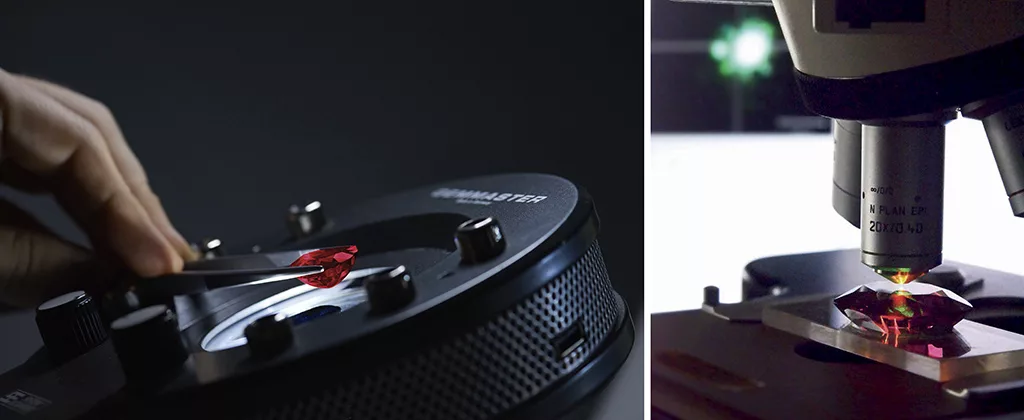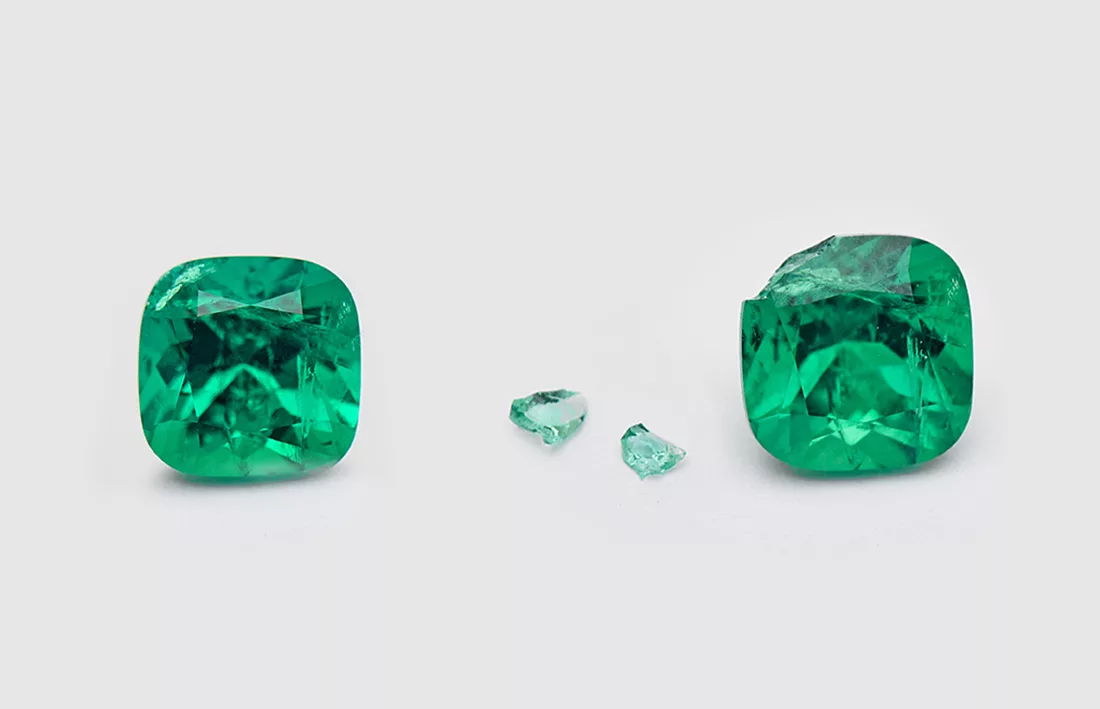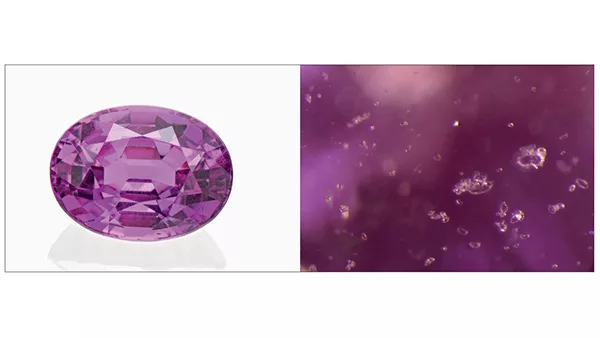
The science of gem testing at SSEF: a fascinating tale
by Dr. M.S. Krzemnicki, first published in Facette 27 (June 2021)

Science,
“any system of knowledge that is concerned with the physical world and its phenomena and that entails unbiased observations and systematic experimentation. In general, a science involves a pursuit of knowledge covering general truths or the operations of fundamental laws.”
Encyclopedia Britannica
Gemmology is a science with its foundations more than a hundred years ago, specifically driven by the emergence of synthetic stones and cultured pearls in the gem trade in the early 20th century. As with any other domain of science, gemmology has evolved in the past decades tremendously through scientific discoveries and instrumental developments. And it is this innovation which has and continues to constantly shape our knowledge about gems in the past, present, and in future.
Commonly, gemmology is described as a sub-discipline of mineralogical sciences. But a closer look reveals that gemmology is in fact very interdisciplinary, as it connects mineralogy (the study of gems as minerals), geology (the formation of gems), mining (prospection and extraction), forensics (testing and tracing of gems), with biology (formation of biogenic gem materials), sustainability (impact on local communities), and social and historical science (use and significance of gems in history and society), to name a few (Figure 2). It is this wealth of interconnections with other scientific branches that makes gemmology such a fascinating world to dive into for scientists. But gem science reaches much further, as the colourful fabric of knowledge provided by scientific studies elucidates and feeds the fascination in the trade and public alike, see for example the success and circulation of gem-related topics on social media in recent years.

Scientific research at SSEF:
Since its beginnings nearly 50 years ago, the Swiss Gemmological Institute SSEF is a driving force and at the forefront of scientific innovation in gemmology. Founded as a non-profit organisation by Swiss trade associations in 1972, the acronym SSEF (Schweizerische Stiftung für Edelstein-Forschung; in English: Swiss Foundation for the Research on Gemstones) was specifically chosen to express its main duty as a non-profit organisation to carry out research on gems with the aim of supporting the trade and maintain the confidence of the public in gems and jewellery.
We are proud to be part of this mission in gemmological research, with many staff members at SSEF working since 10, 20 or even more years. Looking back at the gemmological legacy of our former directors George Bosshart and Prof. Dr. Henry A. Hänni and their teams at SSEF, we see numerous scientific highlights, such as the first scientific study of the Dresden Green Diamond (1989, see Figure 3), a detailed description of the distinguishing characteristics of Kashmir sapphires (1990), or the identification of fissure filling substances in emeralds (1996), to name a few.


As the timeline of scientific discoveries and innovations at SSEF reveals (Figure 4), research is an ongoing process with our curiosity and trade issues as driving forces. Such developments are only possible with a team of specialised experts in-house and external collaborations with other research labs and universities.
It is our philosophy to share our research findings not only with the scientific community, but also with the trade and interested public.
Consequently, we have published in the past few decades numerous articles in scientific and trade journals alike, and have presented our findings to students at SSEF and broader audiences through courses, lectures, webinars and last but not least on social media (check out our accounts on Instagram, LinkedIn, and Twitter).
Examples of scientific innovation by SSEF:
In the past decades, SSEF has been very active in presenting the trade our newest achievements and solutions for a variety of important trade issues and challenges. This is only possible by constantly exploring and advancing state-of-the-art analytical methods (e.g. GemTOF mass spectrometry), including machine learning algorithms for data visualisation (see article in this Facette, pages 12-13).
To start with a few contributions of SSEF about new treatments: we were the first laboratory worldwide to show the usefulness of LIBS (laser induced breakdown spectroscopy) as a rather low-cost option to detect beryllium-diffusion treated fancy sapphires, and supported labs around the globe as they sought to upgrade their gem testing protocols with this new technology. A more recent press release (September 2018) revealed criteria on how to detect low-temperature heating, specifically applied on rubies from Mozambique (Figure 5).

Concerning newly discovered gem deposits, we would like to mention here two major recent contributions: first about a new deposit near Ambatondrazaka in Madagascar providing sapphires of velvety blue colour and excellent quality, and how to distinguish these new stones from sapphires from Kashmir (trade alert and scientific publication, March 2017). And secondly, a very detailed study about excellent new emeralds from the Panjshir valley in Afghanistan, which can compete with the finest qualities of Colombian material in colour and quality (press release and scientific publication in March 2021, see Figure 6 and also article in this Facette, pages 10-11).

When it comes to new materials and technical innovation in testing, we can mention here our studies about HPHT treated diamonds and synthetic diamonds, based on which we developed new analytical tools (SSEF diamond spotter & ASDI) for the diamond trade and jewellery and watch producers.
Another good example is our detailed report about so-called ‘Keshi’ cultured pearls (trade alert March 2010 and subsequent scientific publications), which were introduced in an undisclosed fashion in the market, and which caused quite a challenge in the trade at that time. This achievement finally resulted in a meeting of international pearl testing laboratories in September 2010 in Bahrain, during which a worldwide harmonised standard was agreed on how to address this pearl issue (see www.lmhc-gemmology.org). Other examples are our announcement (and scientific publications) about radiocarbon age dating of pearls and DNA species determination for pearls, corals and ivory (Figure 7), all offered in collaboration with specialised research labs as services to our clients since several years. As this tree of knowledge in gemmology is further growing, we at SSEF are proud to be, as in the past, a strong and reliable branch to nurture its expansion.

New scientific knowledge may lead to new conclusions
As with all science, new achievements and discoveries increase our knowledge. What we know today is more than what we knew in the past. This process is ongoing and is actually a driving force for all innovation and evolution. Whether in medical sciences, or in physics and astronomy, new scientific discoveries are made every day somewhere in the world, and we all profit from this even in our daily life, as the current global pandemic and related research initiatives and successful findings have shown exemplarily.
Whenever we have finalised a research project and established unambiguous criteria to detect a new treatment or to assess the origin of a gemstone, we will inform the public about our findings (e.g. by a press release, and/or publication in an openly accessible journal). Most importantly, however, we will apply with the date of this publicly accessible publication these new criteria on stones submitted for testing. By doing so, we offer the trade the most up-to-date testing expertise, well in line with our slogan: SSEF, The Science of Gem Testing™. We are convinced that this strategy supports the trade and acts as a safeguard against new and undisclosed challenges arriving in the market.
As a consequence of this policy, however, it may occur in rare cases that SSEF is not able to reproduce a conclusion expressed on a previous SSEF report due to new research findings, the availability of additional data, or even in cases where a gemstone or pearl might have been modified at a time after testing at SSEF. This is not related to a mistake, but to a fact inherent to all science, that any conclusion – whether expressed on a gemmological report or a doctor’s note – is based on the latest scientific knowledge and instrumentation, available at the time of examination.
Although we understand that such a change of result for a gemstone is a difficult issue for a client, it must be acknowledged that both scientific knowledge and instrumentation to test gemstones and pearls are rapidly evolving as shown above. It is our policy to be very transparent with a client if such a case occurs and to inform the client verbally and with a written letter about the scientific reasons for such a change.
In summary, it is the mission of SSEF since its foundation about 50 years ago to invest great means to address challenges with new (undisclosed) treatments and origins found in the market. We can reassure you that also in future we will be doing our utmost to develop pertinent scientific instrumentation and continuously review our standards in an independent and scientific manner.


